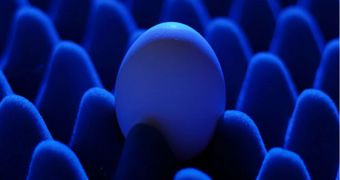A group of researchers in the United States announces the development of a new architecture for quantum-dot light-emitting diodes (QD-LED), devices that can potentially be used to improve computer screens, TVs, standard light sources, and also lasers.
Thanks to these advancements, it may now be possible to create more efficient lights and LED-based devices, investigators from the Harvard University School of Engineering and Applied Sciences (SEAS) explain.
What the research team did was handle a troublesome aspect of previous generations of QD-LED, which was the presence of ligands on the devices. These are organic molecules that are used when the dots are created, but which become nuisances later on.
The dots themselves are currently put under increased scrutiny in the international scientific community because they can emit very bright and rich colors whenever they are stimulated by the presence of an electrical field.
SEAS investigators were able to develop a technology that uses the troublesome ligands to create a more versatile structure for the QD-LED devices. The team describes the advancements in the latest issue of the scientific journal Advanced Materials.
“With quantum dots, the chemical environment that's optimal for growth is usually not the environment that's optimal for function,” explains the Harvard Benjamin Peirce Professor of Technology and Public Policy, Venkatesh Narayanamurti, who was also the co-principal investigator of the research.
He adds that each individual dot is about 6 nanometers in diameter. At such small scales, assembling the devices becomes an extremely complex process. What is more complicated, however, is depositing a solution containing these QD-LED on electrodes.
“The core of the dots is a perfect lattice of semiconductor material, but on the exterior it's a lot messier,” explains lead study author Edward Likovich, PhD.
“The dots are coated with ligands, long organic chains that are necessary for precise synthesis of the dots in solution. But once you deposit the quantum dots onto the electrode surface, these same ligands make many of the typical device processing steps very difficult,” he adds.
SEAS investigators decided to opt out of pursuing the creation of thick, multilayer dots, and decided instead to try to create single-layer diodes. “A thin, monolayer film of quantum dots is of tremendous interest in this field, because it enables so many new applications,” Rafael Jaramillo explains.
The expert, a coauthor of the research, holds an appointment as a Ziff Environmental Fellow at the Harvard University Center for the Environment. The main advantage the new dots have, he adds, is that they can control the flow of electrical current a lot more effectively.

 14 DAY TRIAL //
14 DAY TRIAL //